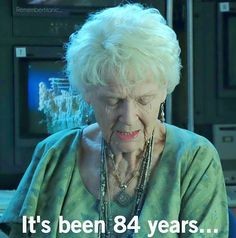Preamble
In the last few months, my experiences have led me to a profound realization: the world is inherently problematic from any perspective. While addressing challenges is often a catalyst for growth and improvement, it’s not always a foolproof strategy—as evidenced by my numerous changes in approach throughout this year. This blog post delves into the complexities of navigating these challenges. Brace yourself for a narrative that aims to be both mundane and reflective simultaneously.

Work
Engaging in work demands substantial cognitive effort, and I firmly believe that different modes of work, be it freelancing, employment, or entrepreneurship, impose varying cognitive loads across different mental faculties. One common aspect among these work modes is their inherent association with change. Regardless of its origin—whether within the company, team, activities, people, or ourselves—we, as individuals, are not inherently predisposed to embrace change. Despite claims of enjoying dynamic environments, shifting activities, or rotating teams, the truth remains that we are not inherently predisposed to change. This paradoxical relationship with change underscores its complexity; it is something we need, yet it instills fear, something we want to be part of, yet it empowers and constrains us simultaneously. Change, in essence, begets problems, problems that must inevitably be confronted. Avoiding change translates to opting out of the solutions it could bring and, potentially, generating problems in the process. The subsequent section delves deeper into what this entails.

Change
Consider a scenario where adopting Technology A is in vogue. The reasons in favor are manifold: it aligns with our context, it comes with established opinions, and there’s a supportive online community in case of issues. Equally valid are the reasons against adoption: substantial operational costs, potential difficulty—perhaps personal—if someone lacks confidence in using the tool, team disagreements, and more. This dichotomy presents a mix of positives and negatives, attracting those eager for change and empowerment while potentially repelling those fatigued by prior experiences. The decision to embrace or resist change is not a judgment; rather, it reflects individual preferences based on what they have experienced the most. Those accustomed to perpetual change find comfort in stability, while those averse to change yearn to break the mold.
From options to people
The crux of the matter isn’t whether to grapple with change or not. Both choices represent strategies for coexisting with change - either implementing it or abstaining from it. The challenge becomes personal: how do I manage individuals within a team who harbor different strategies for dealing with change? While I don’t have a definitive answer, I sense that a viable solution lies somewhere in the middle of two opposing attitudes:
- Tackling all problems that change introduces, irrespective of their form, encouraging each person to find solutions to the challenges change poses for them.
- Ignoring the problems associated with change, rendering the choice to either advocate for or evade it nearly inconsequential, and awaiting the next wave of change.

People people people
Thus, the core issue revolves around people. After numerous strategic shifts, I’ve come to recognize that an effective team comprises individuals who can position themselves, on average, between these two extremes. A proficient manager mirrors this equilibrium, altering course only when absolutely necessary and collaboratively forging new paths when confronted with impassable forks in the road.
Conclusion
In conclusion, the underlying challenge is people. Through my evolving strategies, I’ve realized that a successful team consists of individuals who can navigate between these two extremes. A skilled manager mirrors this approach, adapting their course judiciously and co-creating new paths with their team when faced with insurmountable crossroads.